Videos I Find Myself Frequently Rewatching (most Of These Are Film/television Related, With Some Random
videos i find myself frequently rewatching (most of these are film/television related, with some random topics and serotonin perks thrown in here and there)
how andrew wyeth made a painting
why miyazaki is a true romantic
over the garden wall: why is the unknown so familiar?
ginger rogers, katharine hepburn, and the 1941 oscars
the bisexual anti-fascist (marlene dietrich)
missed calls: a eulogy for the movie phone booth
edvard munch: what a cigarette means
parasite vs sunset boulevard: the disillusionment arc
anatomy of anatomy of a murder
saul bass’s movie posters
we’re all stupid and boring
the outsider’s guide to the social world
over the garden wall’s historical clothing inspirations
the psychology of heroism
comedy dies slow: the marvelous mrs. maisel
late night tv needs to change
the man from u.n.c.l.e (2015): style vs substance
when shakespeare got cool
the weird ways to adapt mary jane
aaliyah, britney, & the apathy of lifetime biopics
why chad and ryan switched clothes in high school musical 2
why megamind is a subversive masterpiece
school of rock’s perfect scene
the movies that inspired knives out
can 4 average people beat a pro crossword puzzler?
how david fincher uses pop music
the beach party genre
how to bring folklore to life
is the lonely genius real?
in defense of love at first sight
forming real human connections? sounds fake but ok
More Posts from Cardinalfandom and Others
I need people to stop blaming the death of movies on “quips”. A quip is just a funny line of dialogue. That’s all. Like I just saw a post talking about quips and the death of movies and brought up Pirates of the Caribbean as an example of a better movie and yes it is but also that movie is FULL OF QUIPS. I just rewatched The Princess Bride. It’s all quips. Every single line. And it’s a masterpiece.
Movies suck when people don’t care about the art they’re making. That includes them not caring about their quips. Which is why a lot of comic relief dialogue ALSO sucks now. But the problem isn’t that funny dialogue exists.
a collection of motivational insights regarding content creation and creative hobbies
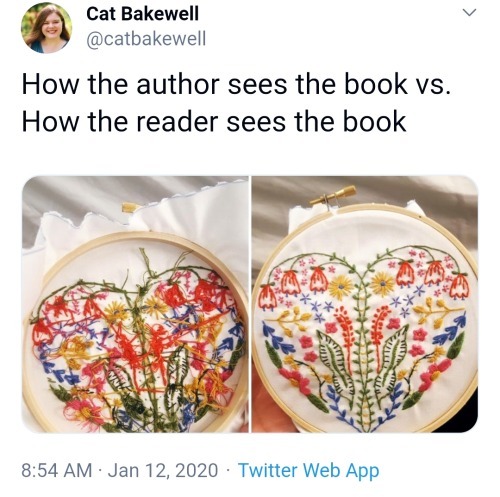





and of course the classic



I’m gonna make a club called “Girls in White Dresses Reading Books” if you want to join GWDRB knock thrice on the haunted abbey door at nine tonight
video essays about horror, fear and dread
Films That Feel Like Bad Dreams
The Nightmare Artist
Fear of Big Things Underwater
Control, Anatomy, and the Legacy of the Haunted House
House of Leaves: The Horror Of Fiction
Monsters in the Closet: A History of LGBT Representation in Horror Cinema
The History of Insane Asylums and Horror Movies
The Saddest Horror Movie You’ve Never Seen
Fear of Forgetting
Slender Man: Misunderstanding Ten Years Of The Internet
The Real Reason The Thing (1982) is Better than The Thing (2011)
The Bizarre Clown Painting No One Fully Understands
The Little Book of Cosmic Horrors
The Disturbing Art of A.I.
Fear of Depths
Goya’s Witches
David Lynch: The Treachery of Language
The True History That Created Folk Horror
The Existential Horror of David Cronenberg’s Camera
a few more and the youtube playlist are below the cut. as always feel free to share your recs as well!
Keep reading
Writing Tips
Punctuating Dialogue
✧
➸ “This is a sentence.”
➸ “This is a sentence with a dialogue tag at the end,” she said.
➸ “This,” he said, “is a sentence split by a dialogue tag.”
➸ “This is a sentence,” she said. “This is a new sentence. New sentences are capitalized.”
➸ “This is a sentence followed by an action.” He stood. “They are separate sentences because he did not speak by standing.”
➸ She said, “Use a comma to introduce dialogue. The quote is capitalized when the dialogue tag is at the beginning.”
➸ “Use a comma when a dialogue tag follows a quote,” he said.
“Unless there is a question mark?” she asked.
“Or an exclamation point!” he answered. “The dialogue tag still remains uncapitalized because it’s not truly the end of the sentence.”
➸ “Periods and commas should be inside closing quotations.”
➸ “Hey!” she shouted, “Sometimes exclamation points are inside quotations.”
However, if it’s not dialogue exclamation points can ask be “outside”!
➸ “Does this apply to question marks too?” he asked.
If it’s not dialogue, can question marks be “outside”? (Yes, they can.)
➸ “This applies to dashes too. Inside quotations, dashes typically express—“
“Interruption” — but there are situations dashes may be outside.
➸ “You’ll notice that exclamation marks, question marks, and dashes do not have a comma after them. Ellipses don’t have a comma after them either…” she said.
➸ “My teacher said, ‘Use single quotation marks when quoting within dialogue.’”
➸ “Use paragraph breaks to indicate a new speaker,” he said.
“The readers will know it’s someone else speaking.”
Essays
Here’s a (non-exhaustive) list of essays I like/find interesting/are food for thought; I’ve tried to sort them as much as possible. The starred (*) ones are those I especially love
also quick note: some of these links, especially the ones that are from books/anthologies redirect you to libgen or scihub, and if that doesn’t work for you, do message me; I’d be happy to send them across!
Literature + Writing
Godot Comes to Sarajevo - Susan Sontag
The Strangeness of Grief - V. S. Naipaul*
Memories of V. S. Naipaul - Paul Theroux*
A Rainy Day with Ruskin Bond - Mayank Austen Soofi
How Albert Camus Faced History - Adam Gopnik
Listen, Bro - Jo Livingstone
Rachel Cusk Gut-Renovates the Novel - Judith Thurman
Lost in Translation: What the First Line of “The Stranger” Should Be - Ryan Bloom
The Duke in His Domain - Truman Capote*
The Cult of Donna Tartt: Themes and Strategies in The Secret History - Ana Rita Catalão Guedes
Never Do That to a Book - Anne Fadiman*
Affecting Anger: Ideologies of Community Mobilisation in Early Hindi Novel - Rohan Chauhan*
Why I Write - George Orwell*
Rimbaud and Patti Smith: Style as Social Deviance - Carrie Jaurès Noland*
Art + Photography (+ Aesthetics)
Looking at War - Susan Sontag*
Love, sex, art, and death - Nan Goldin, David Wojnarowicz
Lyons, Szarkowski, and the Perception of Photography - Anne Wilkes Tucker
The Feminist Critique of Art History - Thalia Gouma-Peterson, Patricia Mathews
In Plato’s Cave - Susan Sontag*
On reproduction of art (Chapter 1, Ways of Seeing) - John Berger*
On nudity and women in art (Chapter 3, Ways of Seeing) - John Berger*
Kalighat Paintings - Sharmishtha Chaudhuri
Daydreams and Fragments: On How We Retrieve Images From the Past - Maël Renouard
Arthur Rimbaud: the Aesthetics of Intoxication - Enid Rhodes Peschel
Cities
Tragic Fable of Mumbai Mills - Gyan Prakash
Whose Bandra is it? - Dustin Silgardo*
Timur’s Registan: noblest public square in the world? - Srinath Perur
The first Starbucks coffee shop, Seattle - Colin Marshall*
Chhatrapati Shivaji Terminus, Mumbai’s iconic railway station - Srinath Perur
From London to Mumbai and Back Again: Gentrification and Public Policy in Comparative Perspective - Andrew Harris
The Limits of “White Town” in Colonial Calcutta - Swati Chattopadhyay
The Metropolis and Mental Life - Georg Simmel
Colonial Policy and the Culture of Immigration: Citing the Social History of Varanasi - Vinod Kumar, Shiv Narayan
A Caribbean Creole Capital: Kingston, Jamaica - Coln G. Clarke (from Colonial Cities by Robert Ross, Gerard J. Telkamp
The Colonial City and the Post-Colonial World - G. A. de Bruijne
The Nowhere City - Amos Elon*
The Vertical Flâneur: Narratorial Tradecraft in the Colonial Metropolis - Paul K. Saint-Amour
Philosophy
The trolley problem problem - James Wilson
A Brief History of Death - Nir Baram
Justice as Fairness: Political not Metaphysical - John Rawls*
Should Marxists be Interested in Exploitation? - John E. Roemer
The Discomfort You’re Feeling is Grief - Scott Berinato*
The Pandemic and the Crisis of Faith - Makarand Paranjape
If God Is Dead, Your Time is Everything - James Wood
Giving Up on God - Ronald Inglehart
The Limits of Consensual Decision - Douglas Rae*
The Science of “Muddling Through” - Charles Lindblom*
History
The Gruesome History of Eating Corpses as Medicine - Maria Dolan
The History of Loneliness - Jill Lepore*
From Tuskegee to Togo: the Problem of Freedom in the Empire of Cotton - Sven Beckert*
Time, Work-Discipline, and Industrial Capitalism - E. P. Thompson*
All By Myself - Martha Bailey*
The Geographical Pivot of History - H. J. Mackinder
The sea/ocean
Rim of Life - Manu Pillai
Exploring the Indian Ocean as a rich archive of history – above and below the water line - Isabel Hofmeyr, Charne Lavery
‘Piracy’, connectivity and seaborne power in the Middle Ages - Nikolas Jaspert (from The Sea in History)*
The Vikings and their age - Nils Blomkvist (from The Sea in History)*
Mercantile Networks, Port Cities, and “Pirate” States - Roxani Eleni Margariti
Phantom Peril in the Arctic - Robert David English, Morgan Grant Gardner*
Assorted ones on India
A departure from history: Kashmiri Pandits, 1990-2001 - Alexander Evans *
Writing Post-Orientalist Histories of the Third World - Gyan Prakash
Empire: How Colonial India Made Modern Britain - Aditya Mukherjee
Feminism and Nationalism in India, 1917-1947 - Aparna Basu
The Epic Riddle of Dating Ramayana, Mahabharata - Sunaina Kumar*
Caste and Politics: Identity Over System - Dipankar Gupta
Our worldview is Delhi based*
Sports (you’ll have to excuse the fact that it’s only cricket but what can i say, i’m indian)
‘Massa Day Done:’ Cricket as a Catalyst for West Indian Independence: 1950-1962 - John Newman*
Playing for power? rugby, Afrikaner nationalism and masculinity in South Africa, c.1900–70 - Albert Grundlingh
When Cricket Was a Symbol, Not Just a Sport - Baz Dreisinger
Cricket, caste, community, colonialism: the politics of a great game - Ramachandra Guha*
Cricket and Politics in Colonial India - Ramchandra Guha
MS Dhoni: A quiet radical who did it his way*
Music
Brega: Music and Conflict in Urban Brazil - Samuel M. Araújo
Color, Music and Conflict: A Study of Aggression in Trinidad with Reference to the Role of Traditional Music - J. D. Elder
The 1975 - ‘Notes On a Conditional Form’ review - Dan Stubbs*
Life Without Live - Rob Sheffield*
How Britney Spears Changed Pop - Rob Sheffield
Concert for Bangladesh
From “Help!” to “Helping out a Friend”: Imagining South Asia through the Beatles and the Concert for Bangladesh - Samantha Christiansen
Gender
Clothing Behaviour as Non-verbal Resistance - Diana Crane
The Normalisation of Queer Theory - David M. Halperin
Menstruation and the Holocaust - Jo-Ann Owusu*
Women’s Suffrage the Democratic Peace - Allan Dafoe
Pink and Blue: Coloring Inside the Lines of Gender - Catherine Zuckerman*
Women’s health concerns are dismissed more, studied less - Zoanne Clack
Food
How Food-Obsessed Millennials Shape the Future of Food - Rachel A. Becker (as a non-food obsessed somewhat-millennial, this was interesting)
Colonialism’s effect on how and what we eat - Coral Lee
Tracing Europe’s influence on India’s culinary heritage - Ruth Dsouza Prabhu
Chicken Kiev: the world’s most contested ready-meal*
From Russia with mayo: the story of a Soviet super-salad*
The Politics of Pancakes - Taylor Aucoin*
How Doughnuts Fuelled the American Dream*
Pav from the Nau
A Short History of the Vada Pav - Saira Menezes
Fantasy (mostly just harry potter and lord of the rings)
Purebloods and Mudbloods: Race, Species, and Power (from The Politics of Harry Potter)
Azkaban: Discipline, Punishment, and Human Rights (from The Politics of Harry Potter)*
Good and Evil in J. R. R. Tolkien’s Lengendarium - Jyrki Korpua
The Fairy Story: J. R. R. Tolkien and C. S. Lewis - Colin Duriez (from Tree of Tales)*
Tolkien’s Augustinian Understanding of Good and Evil: Why The Lord of the Rings Is Not Manichean - Ralph Wood (from Tree of Tales)*
Travel
The Hidden Cost of Wildlife Tourism
Chronicles of a Writer’s 1950s Road Trip Across France - Kathleen Phelan
On the Early Women Pioneers of Trail Hiking - Gwenyth Loose
On the Mythologies of the Himalaya Mountains - Ed Douglas*
More random assorted ones
The cosmos from the wheelchair (The Economist obituaries)*
In El Salvador - Joan Didion
Scientists are unravelling the mystery of pain - Yudhijit Banerjee
Notes on Nationalism - George Orwell
Politics and the English Language - George Orwell*
What Do the Humanities Do in a Crisis? - Agnes Callard*
The Politics of Joker - Kyle Smith
Sushant Singh Rajput: The outsider - Uday Bhatia*
Credibility and Mystery - John Berger
happy reading :)
I just realized, I just bloody realized, Moist Von Lipwig’s story arc is a game of Monopoly through the eyes of a conman going through the board and winning all the pieces.
He has the top hat, the dog, the train (which replaces to automotive in newer boards) the friendship of the Seamstress’ Guild (thimble), the walking iron called Gladys, the boot (he’s the incarnation of the Disc God Fedecks who has winged boots) and also the bag of money.* He goes to jail, but eventually gets to pass and go. He’s integral in the rehabilitation of civic buildings (post office, bank, mint, the acquisition of land to build a railway and then adding stations to said railway), the owner of up market private property, and also he invents paper money which everyone sort of thinks of as a bit of a game.
His very name, Moist Von Lipwig, is a pun about wearing a fake lip wig or mustache. Like so:

Lord Vetinari is quite literally using him to play a life size version of Monopoly with the city. And winning.
(Amendment: Adora with hear deadly footwear is also the shoe/boot.)
(* Alternates: Sam Vimes is boots, Gaspode and Beggars Guild is dog, Wheelbarrow is Harry King, Thimble is Seamstress Guild, Battlehsip/canon is Assassins Guild/Nobility, Money Bag is Thieves Guild, leaving Moist as Top Hat and Train. ANKH-MORPORK MONOPOLY, GIVE IT TO ME)
((edited for typos, too busy flailing))!!!!!



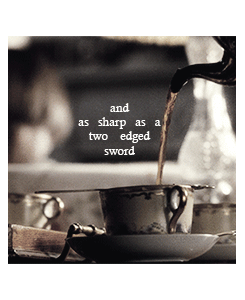
“Tea should be as bitter as wormwood and as sharp as a two edged sword” - Kit Snicket
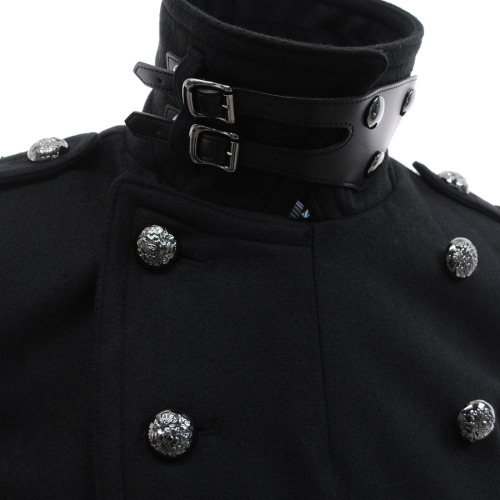
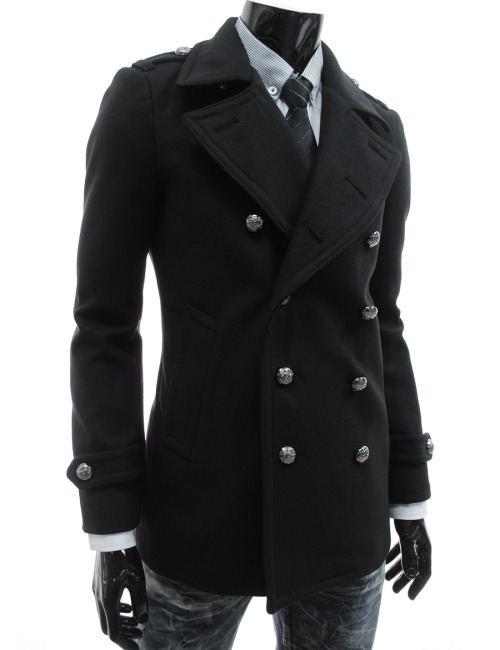
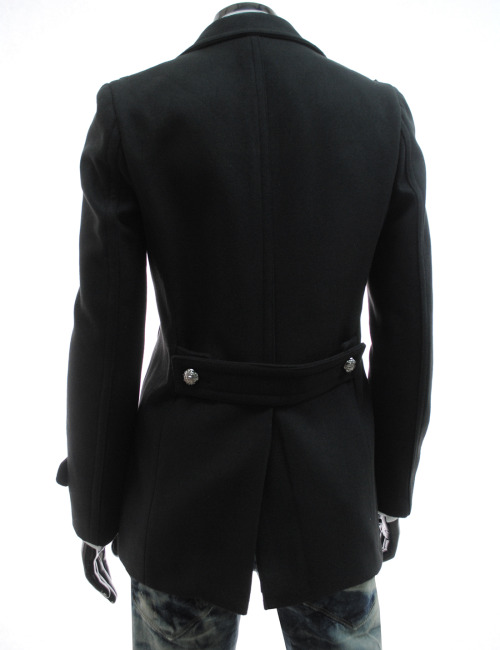

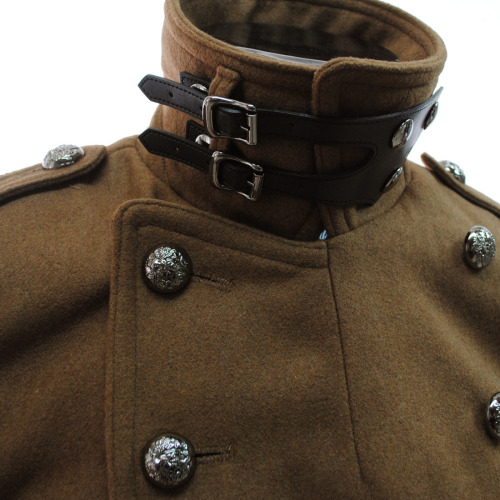

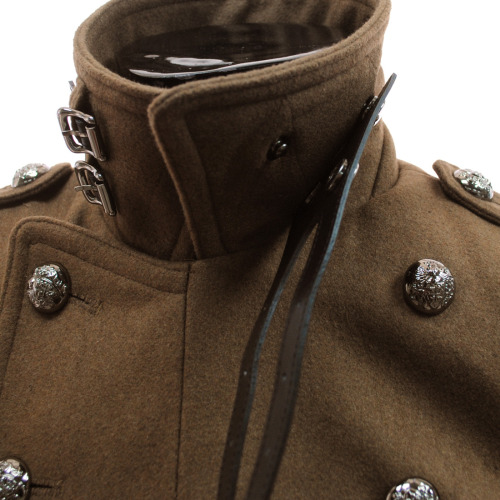
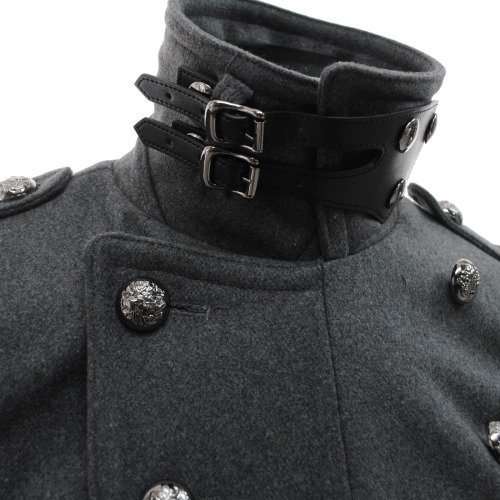
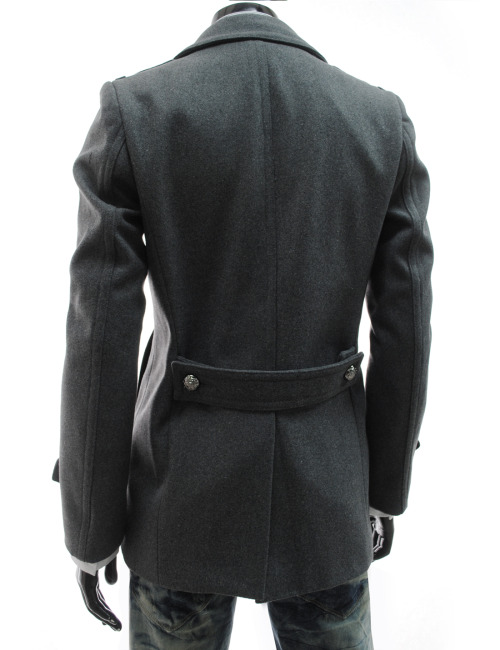
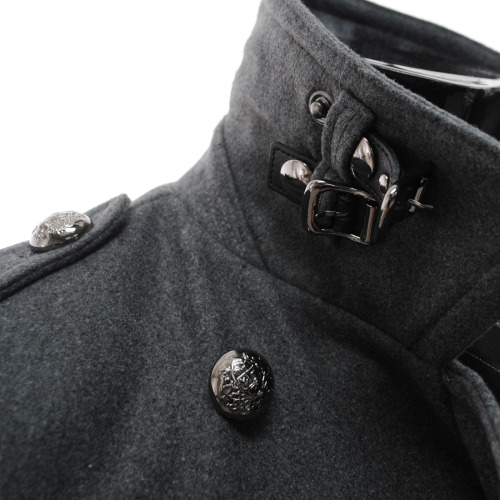
Slim Fit Double Breasted Leather Neck Belt 12 Button Wool Coat


I adore twin peaks because people talk about how opaque it is but like windom earle asked major briggs his greatest fear and the answer was "the possibility that love is not enough" and that's it that's the show. Love wasn't enough.
Not only that love wasn't enough, but that it was what fed the darkness in the woods.
Love is not enough, you have to break the cycle. Fix your hearts or die.
Twin Peaks is a show that tells you exactly what it's about like every three episodes but people don't see it because there's a horse in the living room.
-
 homestuckian reblogged this · 1 month ago
homestuckian reblogged this · 1 month ago -
 homestuckian liked this · 1 month ago
homestuckian liked this · 1 month ago -
 cat-purrsonified liked this · 1 month ago
cat-purrsonified liked this · 1 month ago -
 feelmadinc reblogged this · 1 month ago
feelmadinc reblogged this · 1 month ago -
 feelmadinc liked this · 1 month ago
feelmadinc liked this · 1 month ago -
 mizzyiscute liked this · 1 month ago
mizzyiscute liked this · 1 month ago -
 idunnohow2write reblogged this · 1 month ago
idunnohow2write reblogged this · 1 month ago -
 nonchalantxfish reblogged this · 1 month ago
nonchalantxfish reblogged this · 1 month ago -
 the-best-of-the-geeks liked this · 2 months ago
the-best-of-the-geeks liked this · 2 months ago -
 yourlittlescarlet liked this · 2 months ago
yourlittlescarlet liked this · 2 months ago -
 teadr0p liked this · 2 months ago
teadr0p liked this · 2 months ago -
 mediapit reblogged this · 3 months ago
mediapit reblogged this · 3 months ago -
 astraio reblogged this · 4 months ago
astraio reblogged this · 4 months ago -
 cobaltkicks liked this · 4 months ago
cobaltkicks liked this · 4 months ago -
 cherrymotion reblogged this · 5 months ago
cherrymotion reblogged this · 5 months ago -
 throwbach liked this · 7 months ago
throwbach liked this · 7 months ago -
 lee-etc reblogged this · 7 months ago
lee-etc reblogged this · 7 months ago -
 pixee reblogged this · 8 months ago
pixee reblogged this · 8 months ago -
 lapetitepersonne reblogged this · 8 months ago
lapetitepersonne reblogged this · 8 months ago -
 bearies liked this · 8 months ago
bearies liked this · 8 months ago -
 yournewcryptid liked this · 11 months ago
yournewcryptid liked this · 11 months ago -
 wolfboywarmachine liked this · 11 months ago
wolfboywarmachine liked this · 11 months ago -
 ardentlythieving reblogged this · 11 months ago
ardentlythieving reblogged this · 11 months ago -
 iscairot liked this · 11 months ago
iscairot liked this · 11 months ago -
 ifaaartsometim reblogged this · 11 months ago
ifaaartsometim reblogged this · 11 months ago -
 gvayaba liked this · 1 year ago
gvayaba liked this · 1 year ago -
 lotuspussy liked this · 1 year ago
lotuspussy liked this · 1 year ago -
 ti3s liked this · 1 year ago
ti3s liked this · 1 year ago -
 luckytaxi reblogged this · 1 year ago
luckytaxi reblogged this · 1 year ago -
 kandentchi liked this · 1 year ago
kandentchi liked this · 1 year ago -
 413612 reblogged this · 1 year ago
413612 reblogged this · 1 year ago -
 kittyyyyyyy reblogged this · 1 year ago
kittyyyyyyy reblogged this · 1 year ago -
 kittyyyyyyy liked this · 1 year ago
kittyyyyyyy liked this · 1 year ago -
 chlorofo-rm liked this · 1 year ago
chlorofo-rm liked this · 1 year ago -
 luckytaxi liked this · 1 year ago
luckytaxi liked this · 1 year ago -
 monocotiledonea reblogged this · 1 year ago
monocotiledonea reblogged this · 1 year ago -
 verdemusgo liked this · 1 year ago
verdemusgo liked this · 1 year ago -
 gloomybeau reblogged this · 1 year ago
gloomybeau reblogged this · 1 year ago -
 pombogay liked this · 1 year ago
pombogay liked this · 1 year ago -
 midnightchannel liked this · 1 year ago
midnightchannel liked this · 1 year ago -
 calicocritter reblogged this · 1 year ago
calicocritter reblogged this · 1 year ago -
 ma-chi1993 reblogged this · 1 year ago
ma-chi1993 reblogged this · 1 year ago -
 ma-chi1993 liked this · 1 year ago
ma-chi1993 liked this · 1 year ago -
 sassygaykuja reblogged this · 1 year ago
sassygaykuja reblogged this · 1 year ago -
 kosmosarchive liked this · 1 year ago
kosmosarchive liked this · 1 year ago -
 thisisgettingdifficult reblogged this · 1 year ago
thisisgettingdifficult reblogged this · 1 year ago -
 somepoetryshit liked this · 1 year ago
somepoetryshit liked this · 1 year ago
